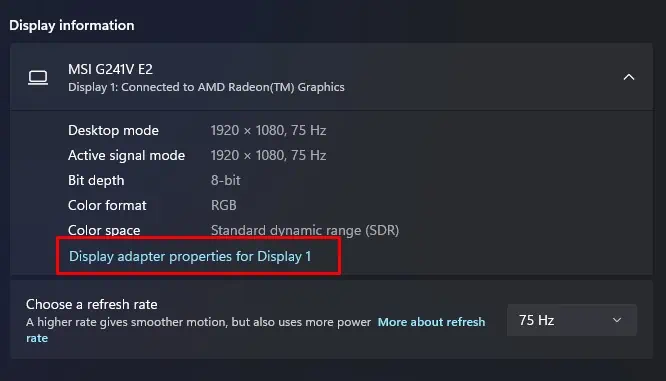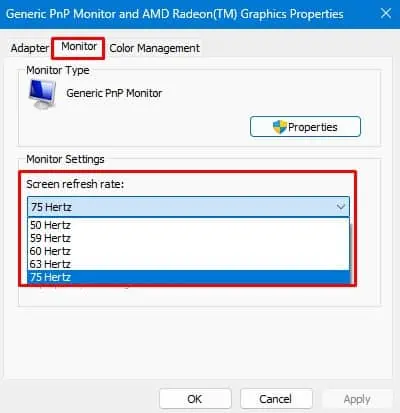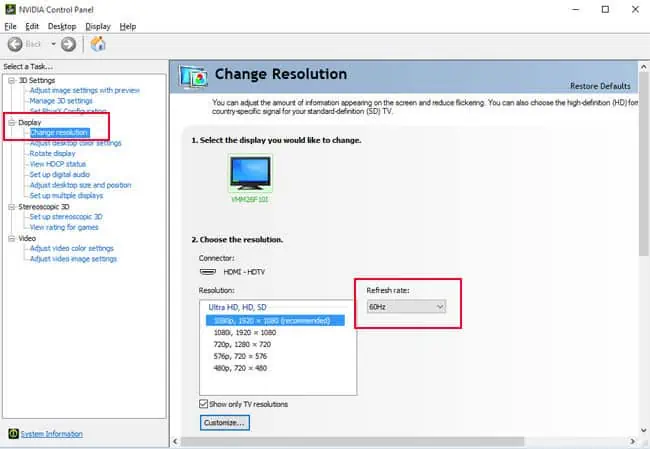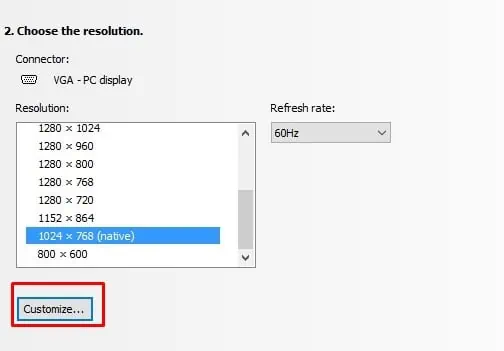Changing the refresh rate of your monitor to a higher value will enhance your viewing experience since the monitor can display more frames per second, resulting in a much smoother screen.
In the context of gaming, a higher refresh rate monitor can provide a competitive edge by presenting more information on the screen, provided the system can deliver enough frames to match the monitor’s refresh rate.
So it’s ideal that you change the refresh rate to the maximum value supported by your monitor. However, setting a high refresh rate will consume more power, especially on a laptop or mobile device, so it is preferable that you lower the refresh rate in such cases.
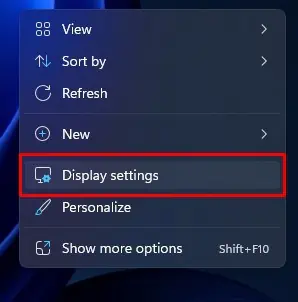
When setting arefresh rate, we recommend that you set the refresh rate to the maximum value supported by the monitor.
Via NVIDIA Control Panel
If you have an NVIDIA graphics card, you may also utilize the NVIDIA Control Panel to change the refresh rate of your monitor.
If you are using a dedicated AMD card or have an AMD processor with integrated GPU, you may use AMD software to change the Refresh Rate on your monitor. AMD software also allows you to overclock your monitor if the monitor supports it.
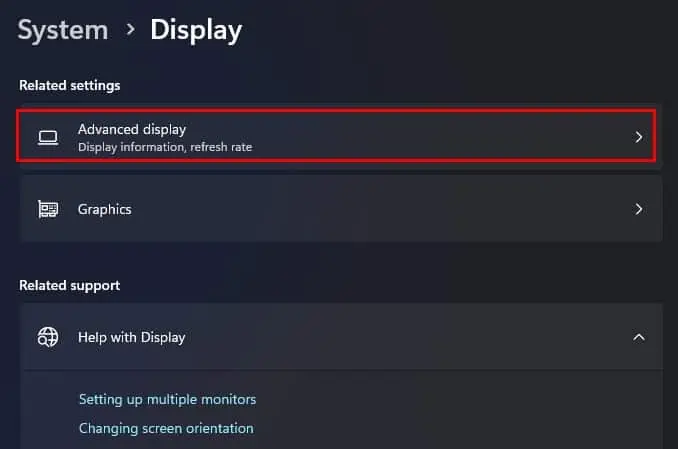
Troubleshooting Issues After Changing Refresh Rate
Changing the monitor’s refresh rate will apply instantly and should work in most cases.
If you run into any issues like a black screen or screen tearing after changing the refresh rate, it could be the fault of the display port/cable or hardware limitation.
Check for Device Compatibility
Depending on the display cables/port and its version, it can only support up to a certain resolution andrefresh rate.
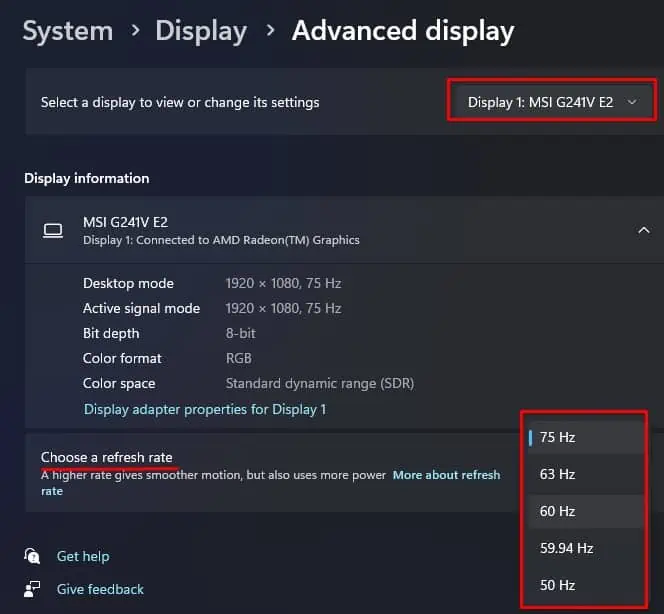
So if you run into any issues like getting a black screen after changing the refresh rate, ensure your cable/ports support it.
Here is a list that shows the HDMI version along with the maximum supported resolution and refresh rate.
Below we have listed the support for multiple DisplayPort versions.
